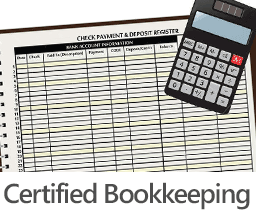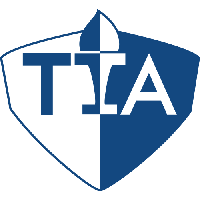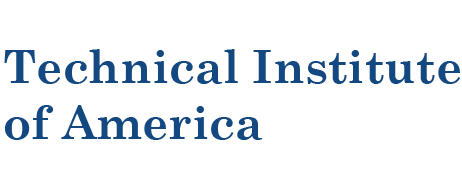
Certified Bookkeeper Training Course
New York City
We are offering a prep course for the nationally recognized certification for Certified Bookkeeper. Our course is located in New York City. This course is designed for individuals to prepare for the 4 exams needed to obtain the certification.
This 64 hour course is great for anyone looking to advance their Bookkeeping career to the next level. Whether you are a freelancer or a bookkeeper working for a company this certification will help you gain national recognition and a complete well rounded knowledge in bookkeeping. The American Institute of Professional Bookkeepers created this certification in 1987 and has since become the national standard for bookkeepers. This certification can greatly affect your pay, promotions, and job opportunities.
Students will learn:
- Adjusting entries
- Correction of accounting errors and bank reconciliation
- Depreciation for tax and your books
- Payroll—paying wages, withholding, depositing, and reporting taxes using the basic forms (W-2, 941, 940, 8109)
- Inventory costing and recording
- Internal controls and fraud prevention
Register for this course before Oct 03, 2025 and get our Quickbooks Basic and Advance classes for free.
Benefits of this course
- Small classes
- Excellent instructors, all who are either Certified Bookkeeper or CPA's. All instructors have a minimum of 10 years of experience as an instructor and bookkeeper or accountant
- Tuition includes all books, registration fee, and exam fees including the 2 national Prometric exam ($650 Value)
- Free retake if needed, good for up to 1 Year (class only)
- Flexible Payment Plan available
- Become a Certified Bookkeeper at the end of the Course. You will be able to put "CB" after your name
545 8th Avenue, 4th Floor
New York, NY 10018
Between 37th and 38th street.
Click Here for Directions
1 2 3 7 A CE BD F M G J Z L S N Q R W
108 111 129 160 161 190 192
 |
Other Training Companies | |
| 100% Money Back Guarantee. If you are not happy with the course after the first class. We are the only school that offers this guarantee. | (If you are not happy with the course, you will not get a refund) | |
| All Classes are guaranteed to run or your money back. | (Many keep postponing classes until they have sufficient students) | |
| Better Business Bureau Accredited Business. | (Not an Accredited Business. No assurance if it is a real company) | |
| Easy Refund Policy. Cancel before the course starts and receive a refund the same day. Reschedule at any time with our no fee rescheduling policy. | (Most companies charged a cancellation fee of up to $400 and take more than 20 days to issue refunds. Please check before you sign up) | |
| Small classes Size. | (Classes with 18+ students) | |
| Flexible Schedule (Weekday, Evening, and Weekend). | (Just Weekday classes) | |
| Instructor with real world Experience. | (Instructors with no real world Experience) | |
| Live instructor-led training. | ||
| Great Location. A few blocks from Penn Station and Port Authority. | (Have to take additional trains and buses to get there) | |
| American owned and operated company. | (Non-American company) | |
| New York State Licensed Regulated School. | (Non-licensed illegal school) | |
| Free retake of the course with in 6 months. | (No retakes allowed) | |
| Flat $1499 tuition. No extra fees for books or supplies ($100 value). | (Some providers charge for books or for using a credit card to pay) |
- Small class sizes. This will allow for great personal training with our instructor.
- 3 full days of training.
- The most flexible schedule. If you cannot attend a few of our classes, you can do a makeup in any of other classes, which includes evening, weekend, or weekday courses.
- Affordable cost.Some places charge more than double for less quality training.
- We are a true training center with a real physical location. Most other providers rent rooms to hold their courses. They are here one moment and gone the next.
- If you are not satisfied with this course after the first class, we will refund the full amount of your tuition. No other school or training facility will make this same offer.
Where is the school located?
New York City Location
545 8th Avenue, 4th Floor
New York, NY 10018
Click Here for Directions
Is this an online or a live classroom training?
This class is a live classroom training in New York City.
Would I get a certificate after completing the class?
Yes you will get a certificate of completion at the end of the class.
Is the training manual included?
Yes the course fee includes a training manual.
Will this course prepare me to pass the QuickBooks User Certification?
Yes, this class will help you to prepare pass the QuickBooks Certified User Exam.
Why is the tuition much lower than other schools?
Our tuition is much lower than other training providers because we have optimized our business processes to ensure quality training at a reasonable price. As a smaller school with lower overhead we are able to provide a great class and better value to our students.
What are your instructors like?
We only hire the best instructors. Our instructors are all QuickBooks ProAdvisors. All instructors have over 10 years’ experience in the filed they teach and over 5 years of experience teaching QuickBooks.
Why should I choose your training over other schools?
Choosing a training provider can be tough choice. We all claim to offer the best value, in terms of price and training quality. The Technical Institute of America offers the lowest price and higher quality trianing than any other school in New York City. As a New York State licensed school and Better Business Bureau Accredited business we can honestly say what we offer is the truth and you can verify it.
Do you ever cancel a class because you don’t have enough students?
No, we never cancel a class. If unforeseen circumstances arise such as bad weather, instructor health or family problems and we have to cancel a class, we will offer all students a 100% refund or reschedule to another class.
Lesson 1: Mastering Adjusting Entries
Section 1: Why we use accruals, deferrals and other adjustments.
- The difference between cash basis and accrual basis accounting.
Section 2: Accrued revenue. How to record accrued revenue.
- Examples of different kinds of accrued revenue.
- Computing and accruing interest receivable.
- How failure to accrue revenue affects the financial statements.
Section 3: Accrued expenses.
- How to record accrued expenses.
- Examples of different kinds of accrued expenses. Computing and recording interest payable.
- How failure to accrue expenses affects the financial statements.
Section 4: Revenue collected in advance (unearned revenue).
- How to record unearned revenue.
- How to accrue revenue earned when the revenue collected was originally recorded in a revenue account v. an unearned revenue account.
Section 5: Prepaid (deferred) expenses.
- Recording prepayments and adjustments.
- How to accrue expenses when prepayments were recorded in an expense account v. a prepaid (asset) account.
Section 6: Other adjusting entries.
- How to compute and record the adjusting entry for bad debt expense for tax purposes using the direct write-off method and for book purposes using the allowance method based on a percentage of credit sales v. accounts receivable.
- Adjustments for depreciation and certain cash accounts.
Section 7: From unadjusted to adjusted trial balance.
- The chart of accounts. Preparing the unadjusted trial balance, entering the adjustments and preparing the adjusted trial balance.
- A summary of how the adjusted trial balance is used to prepare the income statement, balance sheet and statement of retained earnings.
- Basics of the post-closing trial balance.
Lesson 2: Mastering Correction of Accounting Errors
Section 1: Where errors occur and how to find them.
- 10 common causes of errors.
- 5 areas where most errors occur.
- How to analyze errors to correct them.
Section 2: Performing the bank reconciliation.
- Step-by-step instructions on how to do bank reconciliation and record the required journal entries.
- How to correct errors found in the bank statement or in the ledger Cash account.
Section 3: Using the trial balance to find errors.
- Finding and correcting errors in the trial balance or errors that do not show up on a trial balance.
Section 4: Correcting current-period accrual errors.
- How to correct an accrued expense recorded for too little or too much or omitted entirely.
- Correcting journal entries when the expense was originally recorded in an expense account v. a prepaid (asset) account.
- Impact on the financial statements if each kind of error is not corrected.
- How to correct accrued revenue recorded for too little or too much or omitted entirely. Correcting journal entries when the original entry was recorded in a revenue v. unearned revenue account.
- Impact on the financial statements if each kind of error is not corrected.
Section 5: Correcting current-period deferral errors.
- How to correct too little or too much expense recognized or deferred.
- Correcting journal entries when the prepayment was recorded in an expense account v. prepaid (asset) account.
- Impact on the financial statements if each kind of error is not corrected.
- How to correct too little or too much revenue recognized or deferred.
- Correcting journal entries when a payment received in advance was recorded in a revenue v. unearned revenue account.
- Impact on the financial statements if each kind of error is not corrected.
Lesson 3: Mastering Payroll
Section 1: Who is an employee?
- How to classify—and pay—employees, independent contractors, leased employees, temporary help, agency referrals.
Section 2: Federal v. state laws.
- How to know if your employer or employees are covered by key federal laws.
- Minimum wage rules.
- The enterprise test.
Section 3: Paying employees.
- Who is paid overtime; computations. Paying for nonproductive time (showering, changing, etc.).
- When you can dock employee pay.
Section 4: Required payroll data.
- Information, data and forms for each employee.
- How long to keep each kind of information.
Section 5: Form W-4 and state withholding forms.
- How it must be completed—and when you must reject it.
- Rules on withholding a flat dollar percentage or dollar amount of tax.
Section 6: Withholding and depositing taxes.
- How to withhold FICA and federal income tax.
- The monthly, semiweekly and Wednesday-Friday rules.
- The "lookback period." Form 941-X.
Section 7: Filing federal reporting forms.
- Computing Federal Unemployment Tax (FUTA).
- Who must file a 940, W-2, W-3, 941 and Schedule B, and 945.
- Backup-tax rules.
Section 8: When wages are taxable.
- When wages are earned v. when they are paid.
- Handling wages paid in January for December work.
Section 9: Other federal and state requirements.
- Handling the 1099, 1099-MISC, 1099-DIV, 1099-INT, 1099-R, 1096.
- State unemployment insurance (SUI).
- Each state's due dates for filing the state W-2 and distributing copies to employees.
Section 10: Journal entries.
- How to record salary, deductions and employer/employee payroll expense, payment of taxes, premiums, pension contributions and more.
Lesson 4: Mastering Depreciation
Section 1: Depreciation for book v. tax purposes.
- Two ways to compute depreciation.
- Recording depreciation if the financial statements must undergo a compilation or review.
Section 2: Depreciation under GAAP (for book purposes).
- Determining the cost of an individual asset v. group of assets v. contributed assets under generally accepted accounting principles (GAAP).
- Determining the asset's estimated life, residual value and book value.
- Journal entries for a manufacturing v. nonmanufacturing company.
- How depreciation appears on the financial statements.
Section 3: The straight-line method.
- How to compute, allocate and book straight-line depreciation.
- How to set up and maintain the depreciation schedule using this method.
Section 4: The units of production method.
- How to compute, allocate and book units of production depreciation.
- How to set up and maintain the depreciation schedule using this method.
Section 5: The declining balance method.
- How to compute, allocate and book declining balance depreciation.
- How to set up and maintain the depreciation schedule using this method.
Section 6: The sum-of-the-years'-digits method.
- How to compute, allocate and book sum-of-the-years'-digits depreciation.
- How to set up and maintain the depreciation schedule using this method.
Section 7: Depreciation for tax purposes.
- How to depreciate equipment and buildings under MACRS.
- How to apply the half-year convention. . .mid-quarter convention. . .mid-month convention.
- How to use IRS tables. Applying the Section 179 deduction.
- How to set up and maintain the tax depreciation schedule.
Section 8: Depreciating vehicles for tax purposes.
- Annual IRS limits for cars. How IRS limits apply to unmodified SUVs, pickups and vans weighing up to 6,000 lbs. Sec. 179 and depreciation if these vehicles are modified or weigh over 6,000 lbs.
- How to handle employee personal use of company vehicles in a sole proprietorship, S corp, C corp or partnership.
- How to set up and maintain the tax depreciation schedule.
Lesson 5: Mastering Inventory
Section 1: Introduction.
- What to include in merchandise costs, when and how to record the journal entries.
- How inventory is reported on the income statement as cost of goods sold and on the balance sheet as ending inventory.
Section 2: The perpetual method.
- How to compute and record journal entries for purchases (net or gross). . . sales. . .purchase discounts. . .returns and allowances. . .customer sales returns. . .and inventory shrinkage.
Section 3: The periodic method.
- How to compute and record journal entries for purchases (net v. gross), sales, discounts, returns and allowances, sales returns, inventory shrinkage and closing out the inventory-related accounts at year end.
Section 4: Weighted average costing.
- How to compute ending inventory and COGS using weighted average costing (periodic method) and moving average costing (perpetual method).
Section 5: First-in, first-out (FIFO) costing.
- Clear explanations of FIFO under the perpetual v. periodic method, including how to compute and record purchases, sales, COGS and ending inventory.
Section 6: Last-in, first-out (LIFO) costing.
- How to compute and record purchases, sales, COGS, ending inventory and LIFO layers.
- When and how to compute LIFO liquidations.
Section 7: The lower of cost or market (LCM) rule.
- How to determine ceiling, floor, cost and market—then compute and apply LCM by item v. group v. total inventory.
- How to handle purchase commitments and decline and recovery in inventory value.
Lesson 6: Mastering Internal Controls and Fraud Prevention
Section 1: Employee inventory theft.
- Red flags of false sales, phony write-offs and other theft schemes.
- 5 controls that prevent theft.
Section 2: Preventing employee theft.
- 4 key factors to check before hiring.
- How to use a fidelity bond for employees who have access to cash.
- Controls against theft, fraud.
Section 3: Check fraud. and fraud schemes.
- How to prevent—or spot—forged company checks, payroll-related check fraud, customer check fraud.
- Systems that prevent check fraud.
Section 4:Credit card fraud.
- 10 schemes that use lost or stolen credit cards.
- How to spot a counterfeit Visa, MasterCard or American Express card.
- Recommended rules for company credit cards.
Section 5:How vendors can cheat you.
- Forms of bribery.
- Telemarketing scams that target business .
- How to check out a suspicious vendor before you buy.
Sale ends Oct 03, 2025
Filter Location
Upcoming Dates
We don't have any upcoming dates for this course. Please call us at (212) 564-2351 for more information.
Testimonials
"Great Course, I was able to clear all 4 exams and now a Certified Bookkeeper. Teacher was fun and very helpful."
Kane L. CB
"Instructor was excellent. He really made all the effort to ensure we all understood the topics. I passed all 4 exams on the first shot. I recommend to anyone looking to become a Certified Bookkeeper."
Jenny H. CB
"Rocco was a great instructor; very detailed and patient. He really knows the exams inside out. I was able to become a Certified Bookkeeper in a short time. I highly recommend this class."
James O. CB
"The instructor was clear and well spoken. I was able to grasp the lessons very well. Lots of time to prepare for the exams."
Rebecca K. CB



